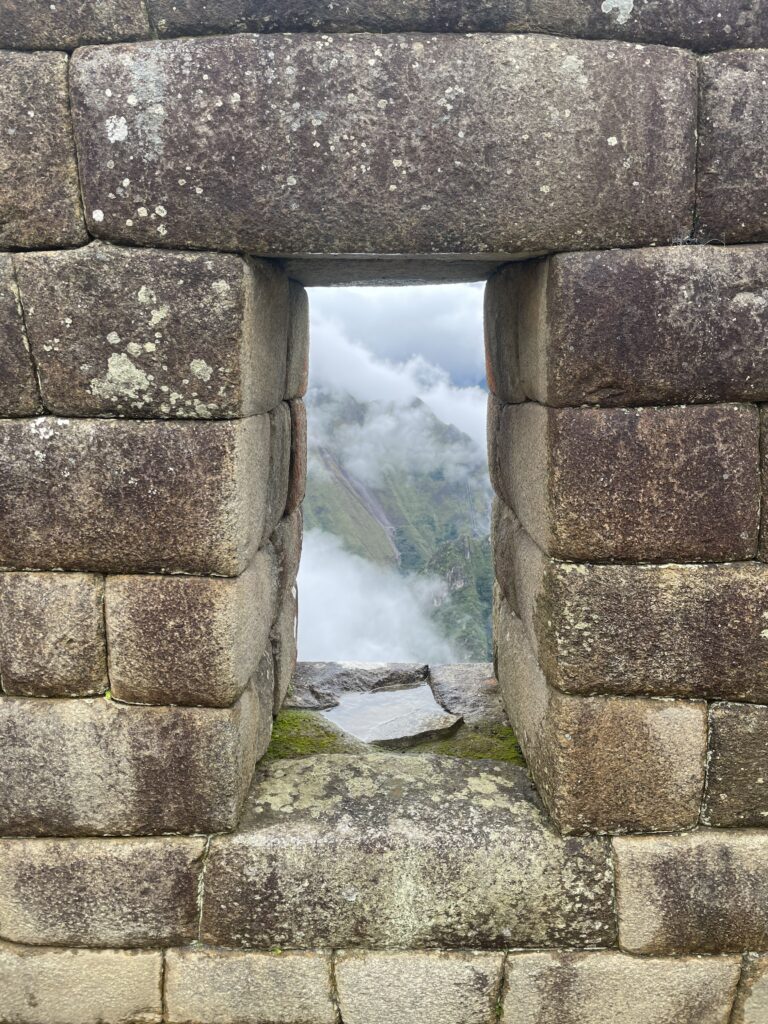The Taste Of My Girl (2021) Full Movie Onlineocean isn't alright.
The seas, which hold some 332,519,000 cubic miles of water, are warming, rising, acidifying, and losing oxygen. And a new comprehensive U.N. climate special report, released Wednesday, presents an encyclopedic review of how Earth's oceans and ice sheets have been altered as the world relentlessly warms.
Over 100 scientists from 36 nations (who cited over 6,900 studies) wrote the stark dispatch, called the "Special Report on the Ocean and Cryosphere in a Changing Climate."
Today's disrupted seas, though, are just the inception of the ocean's transition. That's because the oceans are the true keeper of climate change: Most of the heat humanity traps on the planet gets soaked up by the ocean. And modern civilization won't stop saturating the atmosphere with heat-trapping carbon dioxide anytime soon.
"Over 90 percent of heat from global warming is warming the oceans," said Josh Willis, a NASA oceanographer who had no role in the U.N. report.
"Global warming is really ocean warming," Willis emphasized.
For anyone inhabiting the planet in the coming decades and centuries, this means increased sea level rise and warming, among other effects. The problem will get worse, but humanity still can limit the consequences, specifically by radically curbing carbon emissions.
"If we reduce emissions sharply, consequences for people and their livelihoods will still be challenging, but potentially more manageable for those who are most vulnerable," Hoesung Lee, chair of the U.N.'s Intergovernmental Panel on Climate Change (IPCC), said in a statement.
"Global warming is really ocean warming."
"Even with aggressive [carbon] mitigation efforts, we’re still going to have to deal with consequences of an ecosystem and an environment that has changed," noted Jeremy Mathis, a longtime Arctic researcher and a current board director at the National Academies of Sciences. Mathis had no involvement with the U.N. IPCC report.
(Reminder: Earth's atmospheric carbon dioxide emissions are now skyrocketing. CO2 levels haven't been this high in at least 800,000 years — though more likely millions of years. What's more, carbon levels are now rising at rates that are unprecedented in both the geologic and historic record.)
The report is exhaustive. But here are some of its many important takeaways:
The U.N. report concluded that sea level rise will continue for centuries. In a fairy tale world, wherein society can curb Earth's warming at 1.5 degrees Celsius (or 2.7 degrees Fahrenheit) above pre-Industrial Revolution temperatures (this scenario is now nearly impossible to achieve), sea levels will likely rise between one and two feet by the century's end, the report found.
But if emissions continue to increase at persistently high levels, the IPCC found sea levels would rise between nearly two feet and over three and a half feet (that's over a meter!). That's because Earth's most massive ice sheets, on Antarctica and Greenland, "are projected to lose mass at an increasing rate throughout the 21st century and beyond," the report said.
Even so, U.N. climate estimates are often conservative. Accelerated melting of the Greenland and Antarctic ice sheets — which are presently both experiencing accelerated melt— could boost sea levels significantly more than the report considers.
 Original image has been replaced. Credit: Mashable
Original image has been replaced. Credit: Mashable "I don't think there’s any science that rules out two meters by 2100," said NASA's Willis. "I think most people who study Greenland and Antarctica think [sea level rise] could be higher than current projections."
In large part, that's because warming oceans eat away at and melt the edges of glaciers, said Willis, noting that this is a significant effect Arctic and ocean researchers are just beginning to grasp.
And guess what? The oceans are certainly expected to keep warming. "Over the 21st century, the ocean is projected to transition to unprecedented conditions with increased temperatures" among other changes, the report concluded.
The IPCC report underscores that tropical cyclones, which include hurricanes, are projected to grow increasingly severe, specifically with higher winds and extreme rainfall. That's because cyclones feed off warm ocean waters. Storms add to their girth by sucking up evaporated seawater and build stronger winds by converting water vapor into energy.
SEE ALSO: Hurricane Dorian photos illustrate havoc and destruction in the BahamasResearch has shown remarkably warm waters have outweighed other factors in allowing recent Atlantic storms to intensify into powerful cyclones.
But a cyclone doesn't need to pack intense winds to be devastating. Storms these days often carry more water, and warmer sea surface temperatures are the reason why.
 Original image has been replaced. Credit: Mashable
Original image has been replaced. Credit: Mashable "The oceans are much warmer than they were 50 years ago," said Mathis, who formerly served as the director of the National Oceanic and Atmospheric Administration (NOAA) Arctic Research Program. He noted that warmer oceans evaporate more water vapor into the atmosphere, providing storms more fuel.
"Warmer oceans will drive extreme rainfall events," said Mathis, citing how Tropical Storm Imelda recently deluged the Texas coast. Imelda became one of the wettest cyclones in U.S. history. "That storm spun up [in intensity] in 12 hours," noted Mathis. "Suddenly the region got 42 inches of rain."
The special report focuses not just on the ocean, but on the planet's water everywhere — also known as the hydrosphere. This means glaciers atop Mt. Everest, ice sheets in Greenland, and ocean water thousands of feet beneath the surface.
"I think that the most important part of this work and message is that anthropogenic climate change is affecting all aspects of the hydrosphere, a key ingredient for life," said Jeremy Owens, a marine biogeochemist at Florida State University who had no involvement in the report.
Importantly, Earth's ice sheets and glaciers are "shrinking," the report underscored. Indeed, glaciers on every continent except Australia (which has no glaciers) are retreating, or dying. And critically, mountains are losing snowpack, which is vital for providing people with water (via snowmelt) during the warm or dry season.
SEE ALSO: Greta Thunberg shames apathetic grown-ups at U.N. Climate Action Summit"Snow is good, but we've got less snow," Heidi Steltzer, a lead author of the IPCC report, said in a call with reporters.
The consequences of a warming ocean, though, will be many. Climate change, noted Owens, will affect water temperature (which has dramatic consequences for marine life), the ability of nutrients to disperse around the ocean, acidity in the oceans (as the oceans absorb CO2 from the air), and oxygen levels in the water — which sea creatures require for respiration.
The Arctic is the most disrupted place on Earth. That's because it has warmed more than twice as much as the rest of the globe. Consequently, the great blanket of sea ice that covers the vast Arctic Ocean is vanishing.
Just this week, Arctic sea ice dropped to its second-lowest level on record, which is over 2 million square kilometers below the average minimum ice extent during previous, cooler decades. "The rapid changes in the Arctic are some of the clearest indicators of anthropogenic climate change," Zack Labe, a climate scientist and Ph.D. candidate at the University of California, Irvine, told Mashable.
This Tweet is currently unavailable. It might be loading or has been removed.
The report found that if civilization stabilizes the climate at 1.5 degrees Celsius, the Arctic will continue to thin, but will likely become completely ice-free by the summer's end (in September) only about once every 100 years.
But if the planet warms to 2 degrees Celsius this century (or 3.6 degrees Fahrenheit), the Arctic will likely be ice-free in September once every three years. The planet has already warmed 1.1 degrees Celsius since the late 1800s. So 1.5 Celsius is fast approaching.
The research presented in this IPCC report is valuable, said Mathis from the National Academies of Sciences. But "you don't have to be a scientist anymore to see what's going on," he emphasized.
That's because the consequences of a relentlessly warming ocean and atmosphere are easily visible, to everyone.
Twice in the last three years, the gulf coast of Texas has had storm events that dropped over 40 inches of rain, Mathis noted, including the largest rain event in U.S. history.
And with Tropical Storm Imelda, Texas has now likely experienced five "500-year floods" (which should have a 1 in 500 chance of occurring in any given year) in the last five years.
This Tweet is currently unavailable. It might be loading or has been removed.
"That’s extraordinary, that's exceptional," said Mathis. "You don't have to be a scientist to know that’s not normal."
"Trust your own eyes," he added.
The warming, disrupted oceans are here. And with increased carbon emissions, they are expected to warm, rise, and continue rising. That's a rule of physics.
"We’re staring down the barrel of some big economic and environmental impacts that have already started," said NASA's Willis, noting sea level rise projections.
"All the projections show they are going to get a lot worse."
 SpaceX's launch today could revolutionize the industry: Watch it live
SpaceX's launch today could revolutionize the industry: Watch it live
 New photos reveal Jeff Bezos' Blue Origin is going to be pretty swanky
New photos reveal Jeff Bezos' Blue Origin is going to be pretty swanky
 The NFL isn't smart enough to rig the Super Bowl for Taylor Swift
The NFL isn't smart enough to rig the Super Bowl for Taylor Swift
 Gods of War
Gods of War
 Dreams from the Third Reich by Charlotte Beradt
Dreams from the Third Reich by Charlotte Beradt
 Christmas Tree Diary by Jake Maynard
Christmas Tree Diary by Jake Maynard
 The Living Death Drug by Lisa Carver
The Living Death Drug by Lisa Carver
 Best Samsung deal: Save $60 on 64GB Samsung Galaxy Tab A9
Best Samsung deal: Save $60 on 64GB Samsung Galaxy Tab A9
 Spanish Journals by Catherine Lacey
Spanish Journals by Catherine Lacey
 Windows 11 adds Copilot AI to major app
Windows 11 adds Copilot AI to major app
 Duke vs. BC basketball livestreams: Game time, streaming deals
Duke vs. BC basketball livestreams: Game time, streaming deals
 The Equinox on Orchard Street by Cara Schacter
The Equinox on Orchard Street by Cara Schacter
 Best Samsung Frame deal: Free Music Frame with Frame Pro art TV purchase
Best Samsung Frame deal: Free Music Frame with Frame Pro art TV purchase
 'Plus One': Maya Erskine and Jack Quaid's undersung rom
'Plus One': Maya Erskine and Jack Quaid's undersung rom
 Google Bard is now Google Gemini
Google Bard is now Google Gemini
 Apple seemingly kills web apps and website push alerts for some users in iOS 17.4 beta 2
Apple seemingly kills web apps and website push alerts for some users in iOS 17.4 beta 2
 Exceptionally rare radio sources detected in the distant universe
Exceptionally rare radio sources detected in the distant universe
 Windows and Doors by Laurie Stone
Windows and Doors by Laurie Stone
8 things HBO Max’s ‘Peacemaker’ knocked out of the parkI chatted with a hologram, but holographic meetings aren’t here yetTwitter tip: How to add a content warning to your photo and video tweetsAmericans are really bad at washing hands, USDA researchers findIn astounding space scene, two galaxies pummeled through each other8 things HBO Max’s ‘Peacemaker’ knocked out of the parkHow Shuri from 'Black Panther' is inspiring young women in STEMJamal Edwards, YouTube star and SBTV founder, dies aged 31Woman's Tinder profile pic prompts fierce toilet paper debateCustomize Instagram suggested posts with a few easy steps'Wordle' isn't harder. Why does it feel like it is?The biggest typos Donald Trump deleted from Twitter in 2018 (so far)How to use the Instagram Professional Dashboard featureTrump's Truth Social: What you need to knowTrump finally decides to lower White House flags to honor Capital Gazette shooting victimsPrecious newborn cheetah cubs will stare deep into your jaded soulConservatives want 'civility,' but are against political correctnessGoogle Street View captures very confused cat hanging out in RomeHow to turn on iOS' dark mode on your iPhoneThe best memes of 2018 so far The Obamas proudly introduce 'Hamilton' at the Tonys Man gets naked in Planet Fitness, uses its 'judgment YouTube hits Alex Jones with yet another strike Jimmy Fallon and Stephen Colbert are thirsty for that secret Trump tape Report: Huawei plans to beat Samsung to foldable phone in 2019 Mars is brighter than it has been in years. Here's how to see it. Gigi Hadid shares sweet note supporting Zayn as he struggles with anxiety Some 2018 MacBook Pro users are experiencing kernel panic issues Students recreate graduation photo after their friend can't go along to his big day eBay will begin rolling out Apple Pay this fall Donald Trump just revoked press credentials for the Washington Post The English rose is this summer's hottest men's grooming look That soccer ball Putin gave Trump may have contained a transmitter chip Philips Hue Outdoor LightStrips appear briefly online Facebook quietly sets up 'innovation hub' in China (where it is still blocked) Google Assistant is still a lot smarter than Siri, new study shows Apple's 2018 MacBook Pro can't recover data if the logic board fails The Eiffel Tower is lit up like a rainbow in solidarity with Orlando London shows solidarity with Orlando shooting victims Chris Hardwick gets to go back to work after an AMC investigation
2.3307s , 10181.171875 kb
Copyright © 2025 Powered by 【Taste Of My Girl (2021) Full Movie Online】,Feast Information Network